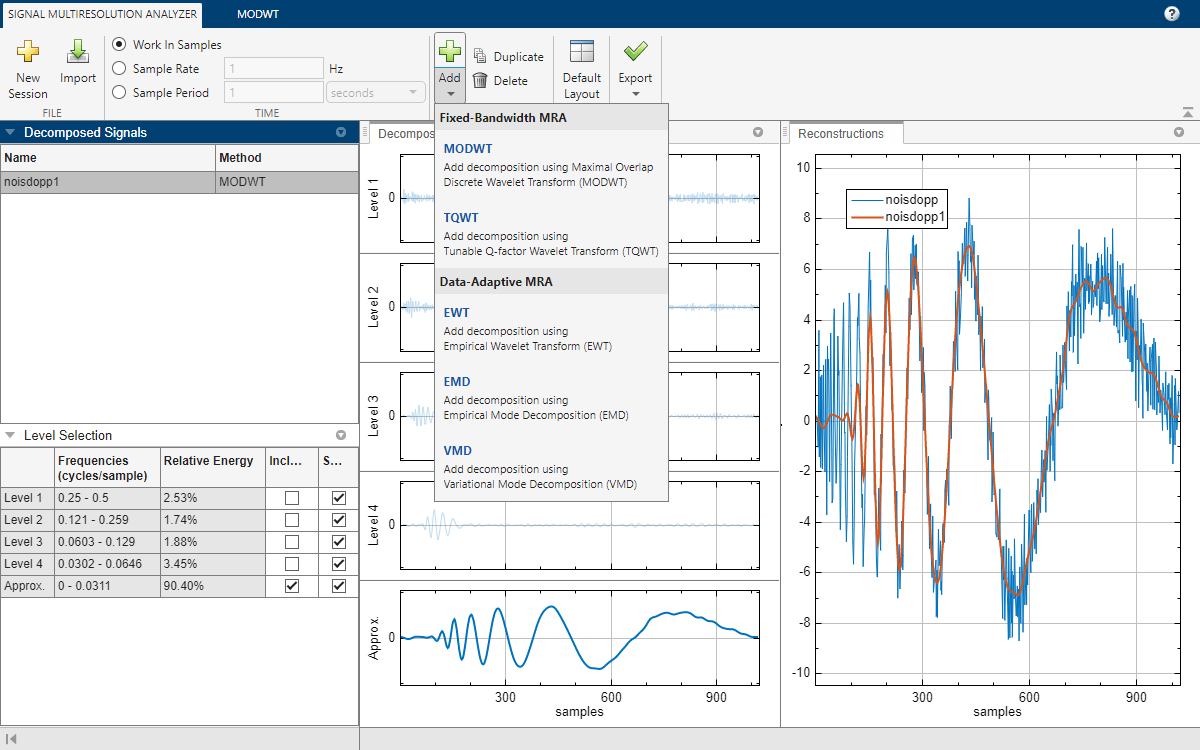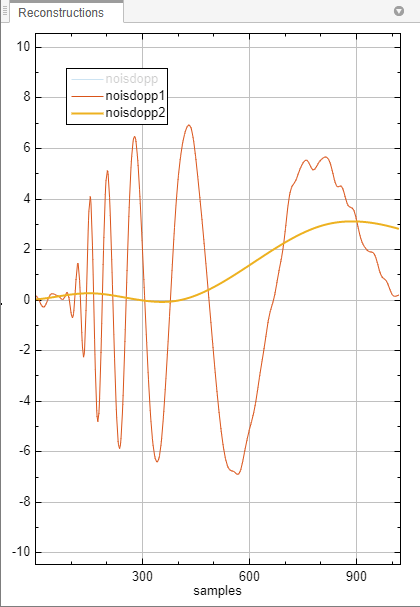Compare MODWTMRA and EMD Decompositions
This example shows how to use Signal Multiresolution Analyzer to compare different types of signal decompositions.
Load the noisy Doppler signal. The signal is a noisy version of the Doppler test signal of Donoho and Johnstone [1],[2].
load noisdoppOpen Signal Multiresolution Analyzer and import the signal into the app. By default, the app creates a four-level MODWTMRA decomposition of the signal in the MODWT tab. In the Decomposed Signals pane, the wavelet decomposition is named noisdopp1. The Reconstructions pane shows the original and reconstructed signals plotted in two different colors.
Add the EMD decomposition. Switch to the Signal Multiresolution Analyzer tab, then click Add ▼ and select EMD.

After a few moments the EMD decomposition noisdopp2 appears in the EMD tab. The app obtains the decomposition using the emd function with default settings. The residual is now the thickest plot in the Reconstructions pane. You can change the parameters in the toolstrip and click Decompose to obtain a different EMD decomposition. To learn more about the parameters and the EMD algorithm, see emd.

To more easily see the differences between the two reconstructions, click noisdopp in the plot legend. The text fades, and the plot of the original signal is hidden. You can use the legend to hide any plot in the Reconstructions pane.

References
[1] Donoho, David L, and Iain M Johnstone. “Ideal Spatial Adaptation by Wavelet Shrinkage.” Biometrika 81, no. 3 (September 1, 1994): 425–55. https://doi.org/10.1093/biomet/81.3.425.
[2] Donoho, David L., and Iain M. Johnstone. “Adapting to Unknown Smoothness via Wavelet Shrinkage.” Journal of the American Statistical Association 90, no. 432 (December 1995): 1200–1224. https://doi.org/10.1080/01621459.1995.10476626.